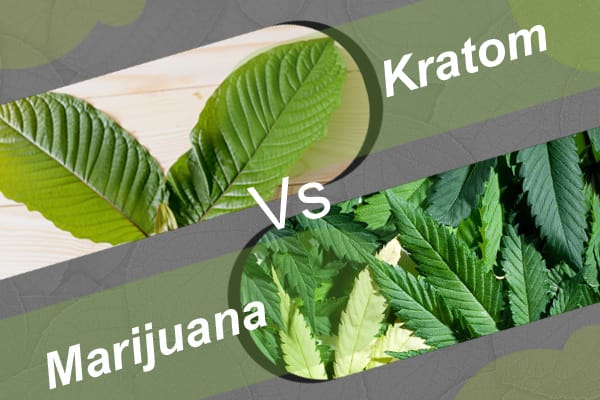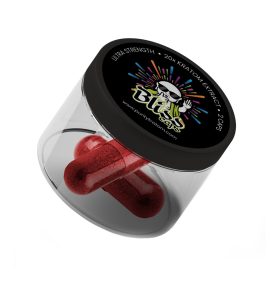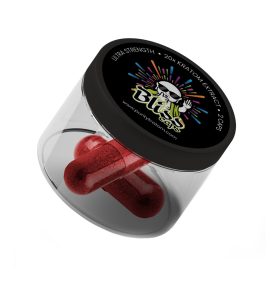
Kratom vs. Marijuana – An Ongoing Debate
Previous post
Why Delta 8 Vapes are Better Than Gummies?

While it may look like there exists a fine line between pharmaceutical and recreational drugs, they mean two very different things, and one needs to be cautious of this distinction. Marijuana and kratom are two such substances that serve as both recreational as well as medicinal drugs. However, users consume them through different means and get affected differently as well. Apart from effects, substance abuse or prolonged consumption of either of these causes harmful side effects and hold differing legal statuses worldwide.

Not just this, but kratom and marijuana have varying safety levels that consumers need to stay wary of to keep their well-being in check.
To understand these differences, one must know what chemicals constitute these drugs and then analyze the debate of kratom vs. marijuana.
Kratom is more recognized and prevalent in the US now but has existed long before that. It is readily available in Southeast Asia, particularly Thailand, Indonesia, Malaysia, Papa New Guinea, and Myanmar. The largest resource of kratom is the mitragyna speciosa trees. These trees are commonly known as the tropical evergreen species and are characteristic of Southeast Asia.
Historical facts suggest that physicians used kratom leaves to relieve musculoskeletal discomfort as a herbal remedy. Apart from this, kratom serves as a local anesthetic and cures intestinal infections, and it is partly because of its benefits that it received recognition n the US.
However, addiction occurs when people start consuming kratom as a recreational drug to instantly relieve their stress instead of finding long-term therapy and treatment. Perhaps the debate lies in whether it is safe to legalize kratom in the States or if it helps cure medical conditions at all.
To help derive a conclusion for this debate, let us compare kratom to a similar drug, marijuana. Marijuana has a different source, commonly called the Indian hemp that carries large reserves of it.
You can find the highest concentration levels of the drug in its flowers, and it has a green, brown, or gray hue that gives off a sweet smell when smoked. Hence, it is a fact that both plants contain different chemical compounds that changes the impact they have on the user.
Chemical substances in marijuana are commonly called cannabinoids, which interact with the endocannabinoid system that regulates hormones and the reproductive system. The two most recognized cannabinoids in marijuana are THC (tetrahydrocannabinol) and CBD (cannabidiol). THC has mind-altering effects on the body, like euphoria and sedation, whereas CBD carries some health benefits.
CBD contains anti-inflammatory properties for curing skin illnesses. It can help treat chronic discomfort, varying blood pressure, and Parkinson’s disease. The chemical composition in the kratom leaf is different from cannabis since it holds over 40 alkaloids. These include mitragynine, and 7-hydroxy mitragynine, which work on opioid receptors.
The former takes control when the user takes low doses of kratom, and it causes a stimulant effect where the person feels more alert and sociability levels increase. However, the latter compound comes into action with an intake of larger doses. It lowers anxiety levels, and sedation takes over.
A long-term effect of kratom also includes opioid-like effects that can potentially lead to addiction.
Kratom and marijuana can both be addictive and hence, fall under the category of habit-forming drugs.
Ironically, users consume kratom to treat opioid withdrawal and panic attacks. While it is true that both compounds have pharmaceutical uses, users should never take lightly the impacts these drugs can potentially have on the mind and body.
To say for sure if these two substances are safe for human consumption is a tricky concept because the usage depends on the consumer’s health, age, and many other factors.
Now, let’s get into their withdrawal symptoms.
A common misconception is that marijuana has no withdrawal symptoms and that users cannot get addicted to consuming it. However, a regular supply of THC to the brain causes it to start depending on it, and when you stop its intake, the brain detects its absence.
The body tries to adapt to the new normal, but in doing so, consumers feel a sense of discomfort commonly seen as withdrawal symptoms. General symptoms include irritability, headaches, stomach issues, cold sweats, and chills.
Research on the side effects of kratom is still inadequate, but it suggests that kratom can have more dangerous side effects due to prolonged usage. These include dry mouth, constipation, liver damage, brain swelling, and seizure.
However, to say that the benefits of kratom far outweigh its drawbacks is inconclusive. Perhaps it all comes down to the discretion of consumers and their decision to be wary of the doses they take when using kratom for both pharmaceutical and recreational purposes.
People mistake marijuana for not being addictive because many cities in the States, for example, California and Alaska, have legalized its usage. The fact that kratom, on the other hand, while still having detrimental effects, stays legalized and unregulated by the federal government is because of the lack of research done. Some states have, however, illegalized its use through their regulations, like Alabama and Indiana.
In short, one must be wary of the local and state laws to understand which of the two substances is legal in their area. Studying legality, together with practicing self-awareness on a more conscious level, helps users understand the extent to which such chemicals can impact lives, both positively and negatively.


